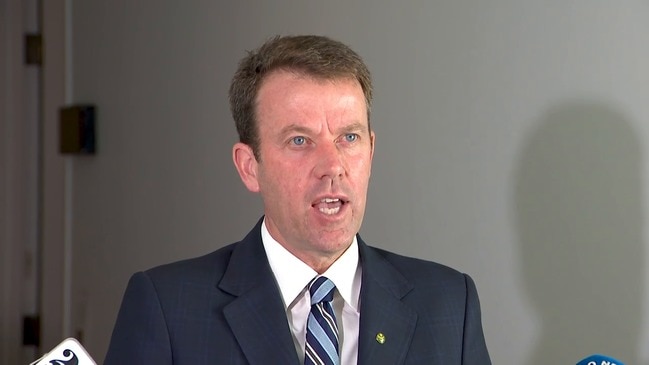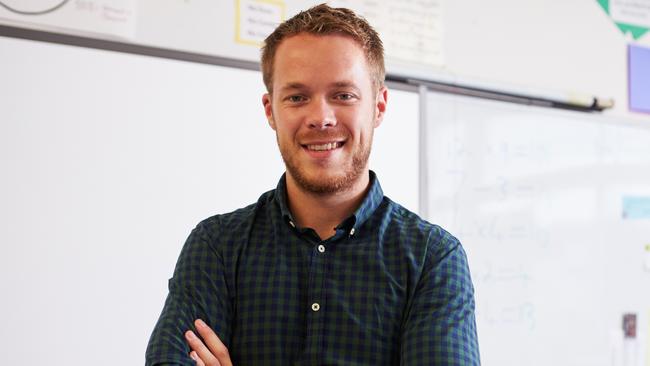What next for Australia’s education system after abysmal PISA results?
After last week’s abysmal PISA results, many parents and teachers are wondering what the future of learning in Australia will entail. But there is a way out of this mess, writes Peter Goss.

Rendezview
Don't miss out on the headlines from Rendezview. Followed categories will be added to My News.
Education ministers met this week in Alice Springs.
On their agenda: how to make the next decade of school outcomes better than those of the past decade. They should think carefully before radically changing policy. Knee-jerk reactions will only make matters worse.
Some commentators tell a bleak story of ever-declining results despite much more money. Their prescription is to go back to basics. But as the saying goes, there is an easy solution to every complex problem – one that is neat, plausible and wrong.
Don’t get me wrong; our results are not good enough. Australia is a rich country and should not be ‘middle of the pack’.
Yet teachers or principals are far from complacent. They care deeply about our children. They work hard to help them learn. Many deliver outstanding results. Struggling schools have been turned into places of joy and learning. There are many patches of excellence – but they are not yet the norm.
Too often, Australian schooling relies on improvement by chance. Meanwhile, high-achieving countries have built education systems that improve by design. Such discipline needs accurate diagnosis of the issues, not simplistic stories.
MORE OPINION: Poor education results come down to poor parenting
Let’s start with how our results have actually shifted. NAPLAN and PISA are telling us different things, and it’s not all doom and gloom.
Every year, NAPLAN tests the literacy and numeracy skills of students in Year 3, Year 5, Year 7 and Year 9. When the 2019 NAPLAN results were published, the headlines were about stagnation. Alarming headlines don’t always reflect reality.

The best way to make sense of NAPLAN is to look at trends over time, not just a single year.
In numeracy, the trend is clear. Average scores have improved significantly since 2010. The gains range from the equivalent of three months in Year 3 to seven months in Year 9. Reading also improved, with significant gains in Years 3, 5 and 9.
About half of the gains – slightly more in numeracy, slightly less in reading – came in the last five years since 2014. And the improvements in Years 3 and 5 – which started early in the decade – may now be flowing through to better Year 7 and 9 results.
Meanwhile, writing is a worry. Year 9 student writing levels in 2019 were the equivalent of Year 8 writing levels in 2010, a loss of 12 months. Most of the drop happened in the first half of the decade.
At a state level, South Australia, Victoria and New South Wales improved more in second half of the decade than in the first, while Queensland and Western Australia improved strongly in both periods.
RELATED: Education report reveals Australian students stuck in the Dark Ages
NAPLAN isn’t the only measure of outcomes. Every three years, we compare Australia’s education system with the rest of the world using something called PISA — the Programme for International Student Assessment.
The latest PISA results were published last week, and showed Australia had its worst ever performance. Our results have dropped steadily since 2000 across reading, mathematics and science. In maths, we are now right at the average of developed countries.
Like a supertanker, changing the direction of an education system takes time. Yet there are some signs that our long slide in PISA may be ending. Our 2018 reading average was the same as in 2015, and the ACT improved its reading score. The drop in maths was less than in earlier PISA cycles. Reforms such as more focus on explicit teaching, or using data to inform classroom practice, may be starting to bite.

NAPLAN and PISA give conflicting messages but measure different things: NAPLAN covers foundational skills while PISA tests how well students can apply what they know.
This messy story would look worse if Australia had funded schools as generously as many pundits claim. They are wrong.
At first glance, Australia looks like a big spender. We put more of our national GDP towards schooling than similar countries, and funding per student is high. But Australia has more schoolkids compared to our population size than similar countries. And Aussie wages are high, in part thanks to the mining boom.
Taking these factors into account, Australia funds its schools less than most similar countries, not more. Even Estonia – wrongly cited by the Federal education minister as spending half as much as Australia per student – actually spends just as much as us.
What about those big increases in school funding? Yes, we spent much more in 2019 than in 2010, but mainly because wages went up and student numbers grew. After adjusting for wages and students, funding to government schools increased by just 1 per cent over the decade to 2017 – a miserly $15.50 per student per year. Think “sandwich and milkshake”, not specialist teachers or more support for students with disability.
Taken as a whole, the 2010s weren’t great. But that is no reason to panic. Now is the time to systematically deliver the reforms that are already in place, plus those identified in the Gonski 2.0 report. In particular, Ministers should discuss Recommendation 16 from the Gonski 2.0 report, a structured teacher career pathway to give expert teachers more time to support their peers.
Improving education outcomes needs good policy, steady support for schools, and consistent hard work. Australia can and must do better. And it must start with an honest accounting of what has actually happened over the past decade.
Peter Goss is the School Education Program Director at the Grattan Institute.
